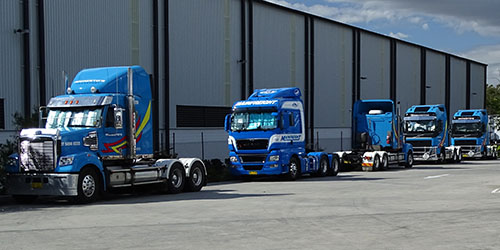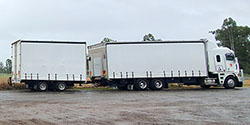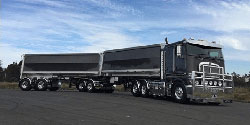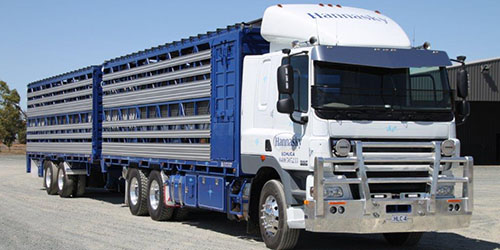General Access Vehicles (GAV) don't require a permit or notice to access road networks; these vehicles have as-of-right access to the network unless signposted otherwise (e.g. a bridge tonnage restriction).
For a heavy vehicle to be considered a GAV, it must:
- Comply with the dimension requirements for the eligible vehicle or combination.
- Comply with mass limits (GML/CML) for the eligible vehicle or combination.
Vehicles and combinations with general access
Bus

A heavy motor vehicle built or fitted to carry more than nine adults, including the driver.
Prime mover

A heavy motor vehicle designed to tow a semitrailer.
Prime mover semitrailer combination

A prime mover towing one semitrailer up to 19m in length.
Rigid truck

A rigid motor vehicle built mainly as a load carrying vehicle.
Rigid truck and trailer combination

A rigid truck towing one trailer up to 19m in length.
The following combination is not a GAV, but is provided general access under a notice.
Short B-double combination

A B-double up to 19m in length (21.3m in Tasmania) can operate under general access, as long as it complies with mass limits and other relevant conditions outlined in the National Class 2 B-double Authorisation Notice 2024 (No.1).
Mass and dimension limits
The Heavy Vehicle (Mass, Dimension and Loading) Regulation defines general mass and dimension limits and the restrictions on a vehicles size and weight.
Any vehicle or combination that exceeds a general mass or dimension will have restricted access to the road network and require a notice or permit to travel.
Dimension limits
Dimension includes:
- width
- length
- height
- rear overhang
- forward projection.
Note: For more information on 4.6m high vehicles, refer to the Operating a 4.6m high heavy vehicle as a specified semitrailer and under other notices information sheet (PDF, 321KB).
Mass limits
To be considered a GAV, the vehicle or combination must comply with general or concessional mass requirements.
General mass requirements include:
- those specified by the vehicle manufacturer
- individual axles and axle groups as prescribed in the MDL Regulations
- mass limits for individual components (vehicles and trailers)
- the combination mass limit, including as determined by axle spacing requirements.
| General Mass Limits (GML) | Concessional Mass Limits (CML) |
|---|---|
|
|

 Accessibility tools
Accessibility tools


